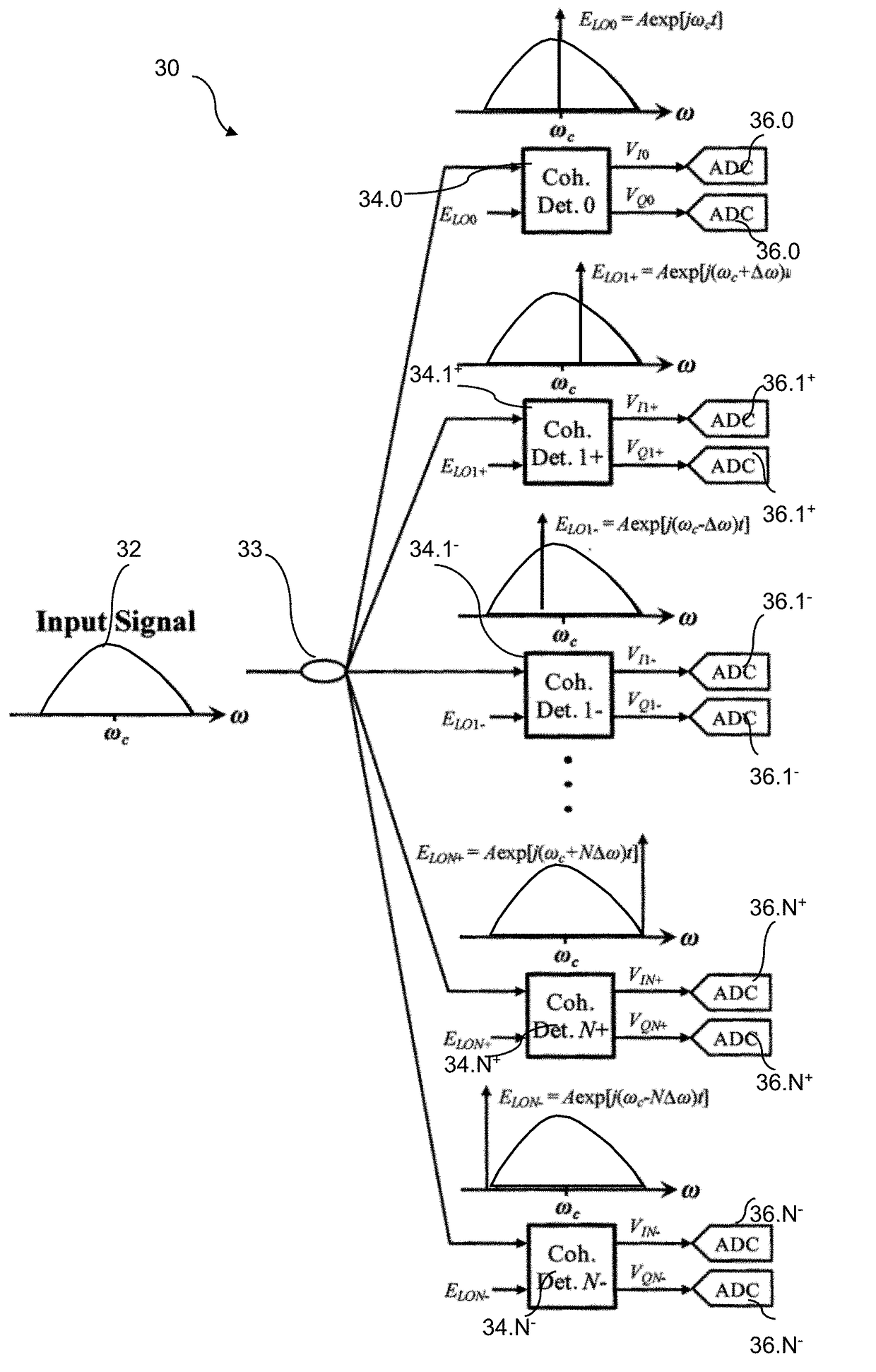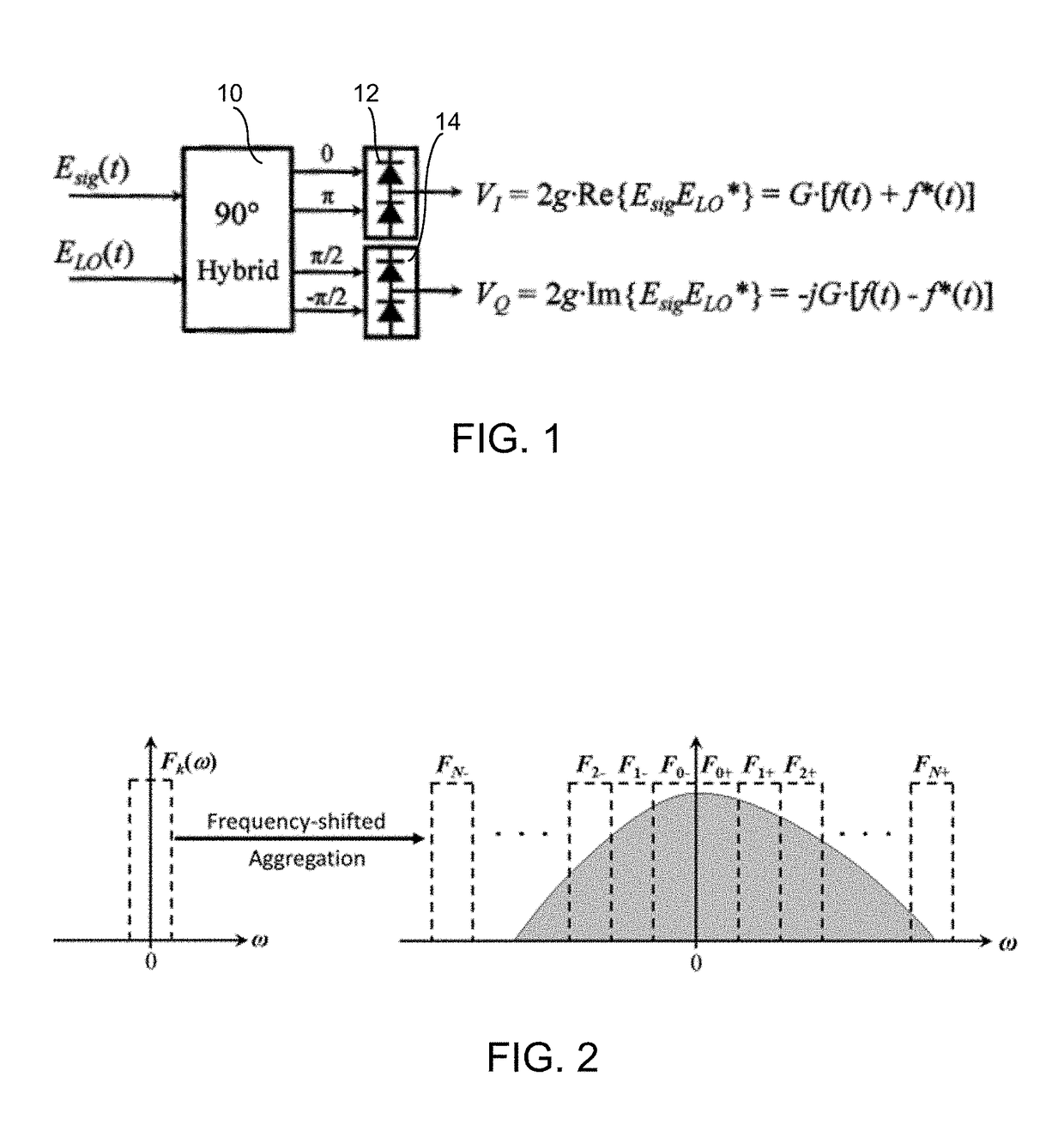Receiver with mutually coherent optical frequency combs
a mutually coherent optical frequency and receiver technology, applied in the field of hybrid, photonics-assisted receiver architecture based on mutually coherent frequency combs, can solve the problems of distinct implementation challenges, insufficient bandwidth, physical implementation, etc., and achieve the effects of preventing frequency reconfigurability, high tone count, and limited tone coun
- Summary
- Abstract
- Description
- Claims
- Application Information
AI Technical Summary
Benefits of technology
Problems solved by technology
Method used
Image
Examples
example 1
band (UWB) Secure Wireless Communication
[0072]In the example of ordinary (single-carrier) PPM demodulation, the frequency phase slope should be measured to estimate the received pulse position. Consequently, the resolution of the frequency decomposition should be sufficient to provide accurate pulse position estimation: the resolution in this case is directly proportional to the number of frequency comb tones used. Correspondingly, a wideband optical frequency comb with high tone count is superior but imposes distinct implementation challenges. Recognizing this, conventional comb generation techniques such as E / O-generated combs, resonator-seeded combs and mode-locked laser combs impose either limited tone count or prevent frequency reconfigurability. On the other hand, with the advent of shock wave and comparable performance parametric mixers with hundreds of optical comb tone counts readily achievable, and frequency pitch reconfigurability, such mixers are desirable for their use ...
example 2
ionary Analysis
[0086]In cyclostationary (CS) analysis, spectral computation must be performed over multiple modulation cycles. A conventional cyclostationary receiver must perform DFT in real-time in order to complete the acquisition chain. Current all-electronics DFT technology limits real-time spectral bandwidth to sub-GHz-scale range—two orders of magnitude below the needs of future EW spectral range (>110 GHz).
[0087]Incorporation of the inventive mutually-coherent frequency comb structure into a CS analyzer architecture for signal replication and frequency decomposition can completely eliminate a high bandwidth ADC and dispenses with the need for computational Fourier mapping of the received emission.
example 3
[0088]Real-time pattern recognition poses technology limit in both imaging, SIGINT and cyber-defense fields. Terabit-per-second-capacity lightwave channels that carry high-capacity terrestrial and submarine fiber data traffic present an enormous challenge to analyze an anomalous traffic pattern in real time. In practical terms, this means that DFT of Terabit-class stream must be computed at wirespeed, i.e., at latency that is comparable to a lightwave packet traversing the localized segment of fiber. A DFT coprocessor architecture that employs the physically-assisted computing enabled by the mutually-coherent frequency comb of the present invention would be capable of real-time, continuous operation that approaches or even matches a lightwave channel rate.
PUM
 Login to View More
Login to View More Abstract
Description
Claims
Application Information
 Login to View More
Login to View More - R&D
- Intellectual Property
- Life Sciences
- Materials
- Tech Scout
- Unparalleled Data Quality
- Higher Quality Content
- 60% Fewer Hallucinations
Browse by: Latest US Patents, China's latest patents, Technical Efficacy Thesaurus, Application Domain, Technology Topic, Popular Technical Reports.
© 2025 PatSnap. All rights reserved.Legal|Privacy policy|Modern Slavery Act Transparency Statement|Sitemap|About US| Contact US: help@patsnap.com



